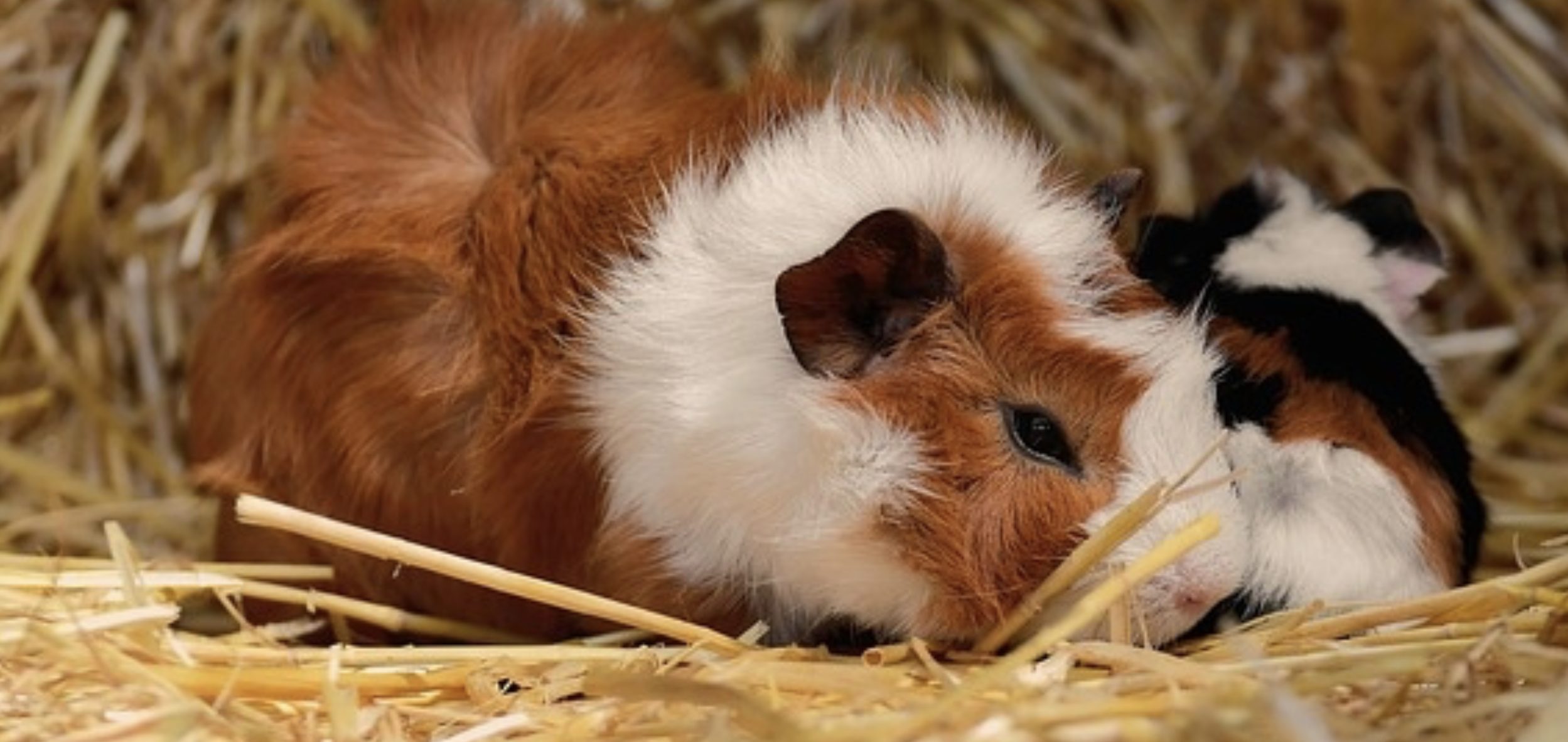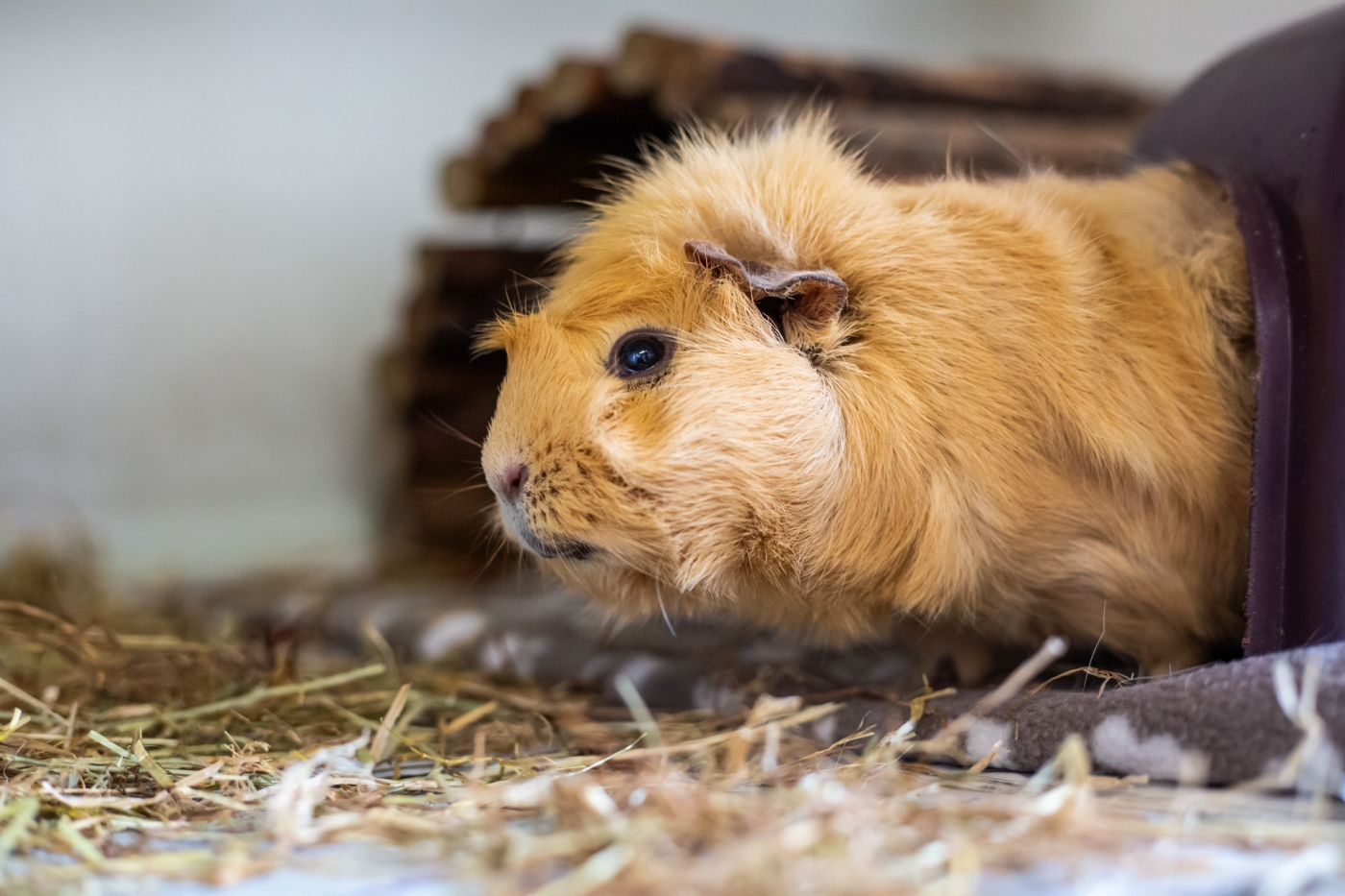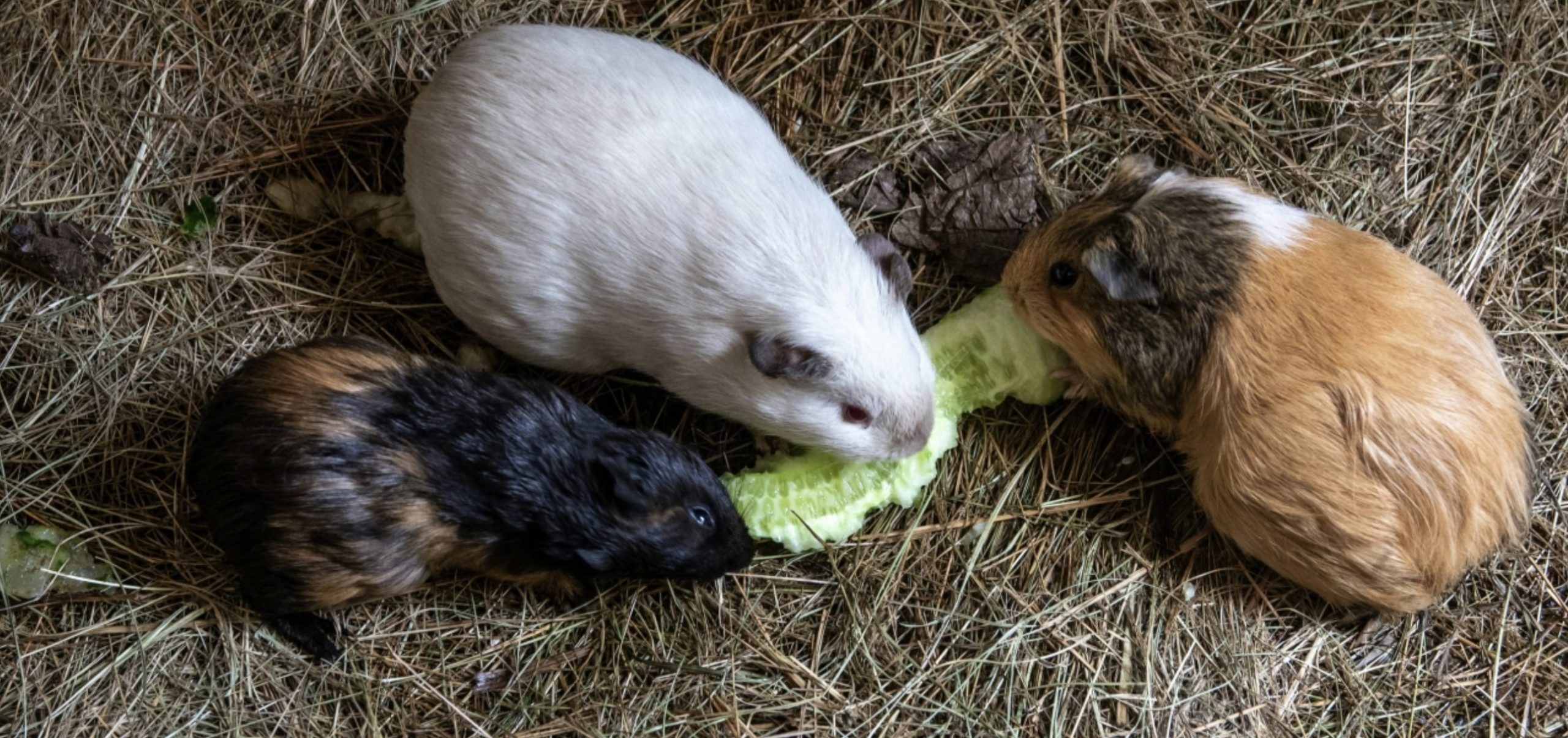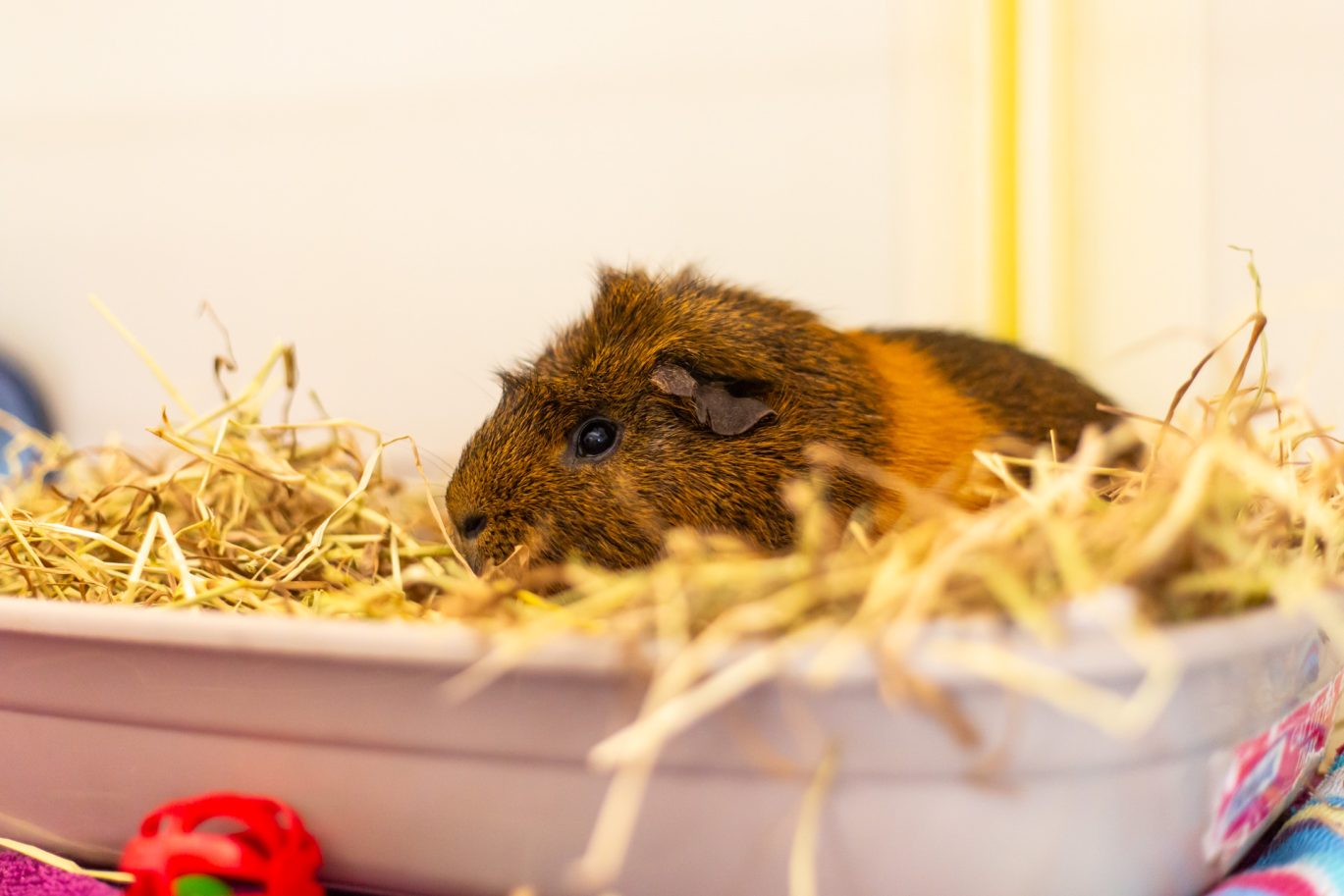
What Do Guinea Pigs Eat?
What to feed your furry friend for breakfast, lunch and dinner.
Caring for a guinea pig is more than just cuddles and playtime, it’s important to know what they should and shouldn’t be eating so that they can be their healthiest, and happiest self.
What to feed guinea pigs
Guinea pigs are herbivores – meaning they only eat plants. They don’t eat dairy, eggs, meat or insects. Fresh hay, grass and leafy veg make up the bulk of their diet.
They need a diet that is very high in fibre to keep their teeth a healthy length and ensure their digestive system is running smoothly. A guinea pig’s teeth grow constantly so must be continuously worn down by fibrous foods. As well as this, lacking fibre in their diet can cause a life-threatening condition called Gut stasis in which their digestive system slows down or stops working entirely.
Their diet must also include a good amount of Vitamin C as they’re unable to produce their own which puts them at the risk of scurvy. An ideal diet consists of unlimited hay and grass and a daily amount of pellets and fresh vegetables, as well as a constant supply of fresh drinking water.
Hay and grass
Hay should make up around 85-90% of your guinea pig’s diet. Unlike with pellets – you can’t overdo it. You can also give them fresh grass, however, try to introduce this slowly and in lesser quantities in case it upsets their stomach.
Guinea pigs are natural grazers, they will pick at food all day every day so it’s important that you leave enough food sources out for them and make sure they always have enough hay and grass lying around. If your guinea pig lives indoors, you could grow fresh grass in pots in their enclosure.
There are two types of hay: grass and leguminous. A mix of timothy, orchard, meadow and oat hay is the best option. Ensure that it’s kept in a cool, dry place so it doesn’t become mouldy or get mildew. You can scatter the hay and grass throughout their living space to encourage natural foraging behaviours.
Don’t feed your guinea pig lawnmower clippings as mown grass ferments quickly so this may upset their digestive system and make them ill.
Pellets
Alongside hay and grass, you should also be feeding your guinea pig grass-based pellets each day. These pellets should be specially formulated for guinea pigs and contain Vitamin C.
Follow the guidance on the packet, or from your vet, for the portion size. We’d usually recommend one tablespoon. A fresh portion must be given each day and old pellets disposed of as Vitamin C is destroyed over time, especially when exposed to air. Your pet may need a larger portion if they’re growing, pregnant, nursing or underweight.
It’s best to opt for plain or boring looking pellets rather than colourful muesli mixes as this can result in something called “selective eating”. This is when your guinea pig picks out the tasty bits and ignores the healthy ones. To ensure their nutritional needs are met, it’s best to feed them specially formulated pellets as muesli mixes are usually high in sugar and can contain unsuitable ingredients. Just as with the hay and grass you can scatter these across their space to encourage them to forage and stay active.
Fresh Vegetables
Fresh veg and herbs are a great extra source of Vitamin C for your furry friend. As a general rule of thumb, we’d recommend one cup of vegetables daily, with a variety of offerings.
Healthy and nutritious vegetables that guinea pigs can eat daily include:
- Fresh herbs (parsley and coriander)
- Lettuces (romaine, gem and leafy)
- Bell peppers (any colour but green is best)
There are also some vegetables that can be given in small amounts, a few times a week, as they’re high in sugar or calcium content which can cause health issues if eaten consistently. These include:
- Broccoli
- Spinach
- Kale
- Squash
- Basil
- Dill
- Watercress
- Mint
- Chopped up carrot
Fruit
You can feed your guinea pig fresh fruit as a treat, in small amounts and not too regularly. Fruit can be a good source of Vitamin C but it’s also usually high in sugar so be mindful of what type of fruit you’re feeding your pet. For example, strawberries and tomatoes have a higher nutritional value than bananas and melons.
Fruit that’s safe for guinea pigs include:
- Strawberries
- Tomatoes
- Apples (not the pips as these are poisonous)
- Kiwis
- Cherries
- Blueberries
- Plums
- Pears
- Melon
- Bananas
What to not feed guinea pigs
Guinea pigs must have a strict diet in order to stay healthy so it’s best to stick to the safe foods listed above.
There are a few fruits and vegetables that can be harmful and poisonous to guinea pigs so steer clear of these:
- Iceberg lettuce
- Potatoes
- Garlic
- Avocados
- Coconut
- Citrus fruits
- Chives
- Grapes
- Onions
- Raisins
- Rhubarb
- Mushrooms
Avoid sweet or salty human ‘junk’ foods as these can be full of things that are harmful to guinea pigs.
Foods that are high in starch, carbohydrates and fat should also be avoided such as:
- Seeds
- Nuts
- Beans
- Peas
- Cereals
- Oats
Feeding your guinea pig
As we’ve touched on, guinea pigs are grazers so it’s important to make sure they always have hay and grass to nibble on and constant access to fresh water.
Their diet can also benefit from forage – plant matter that’s eaten by grazing animals. Dried herbs and flower mixes that are sold for small animals or freshly picked forage from areas free of pesticide and animal fouling, such as dandelions and strawberry leaves, are all good options. Providing this foodstuff to your guinea pig promotes natural foraging behaviours and helps with mental enrichment.
When feeding your guinea pig, avoid sudden changes to their diet and routine. If you’re changing their food or introducing new foods, then do so slowly and gradually. See how their digestive system responds to this – if they start eating less, are less active, have watery stools or have any other changes in behaviour then stop the new food and contact your vet.
It’s important to always be checking your pet for any changes in eating, drinking or toilet habits. If you find your guinea pig eating their poo, then don’t be alarmed – guinea pigs have two types of faeces. One is soft and filled with nutrients which they re-injest, called caecotrophs, and the other is hard, and pellet-like which is produced after their food has been digested twice.
We need your help
We hope this advice helps you create a balanced diet for your guinea pig, packed with foods that support their health.
Please consider giving a one-off donation today to help us support the nutrition of the guinea pigs that end up in our care.
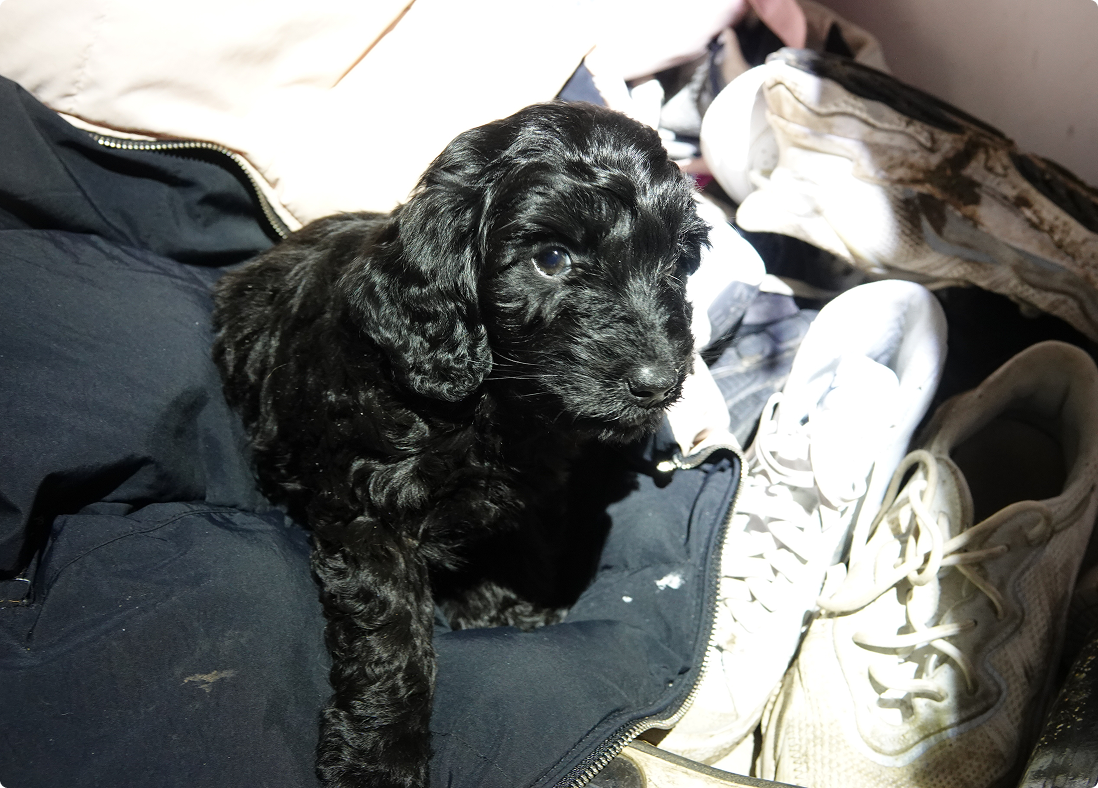
Puppies across Scotland need your help
Please consider giving a monthly donation today. Give Scotland’s animals the gift of safety this winter and beyond. The criminals involved in the low-welfare puppy trade never stop. And with your help, neither will we. Every £1 matters to puppies like Winnie.
